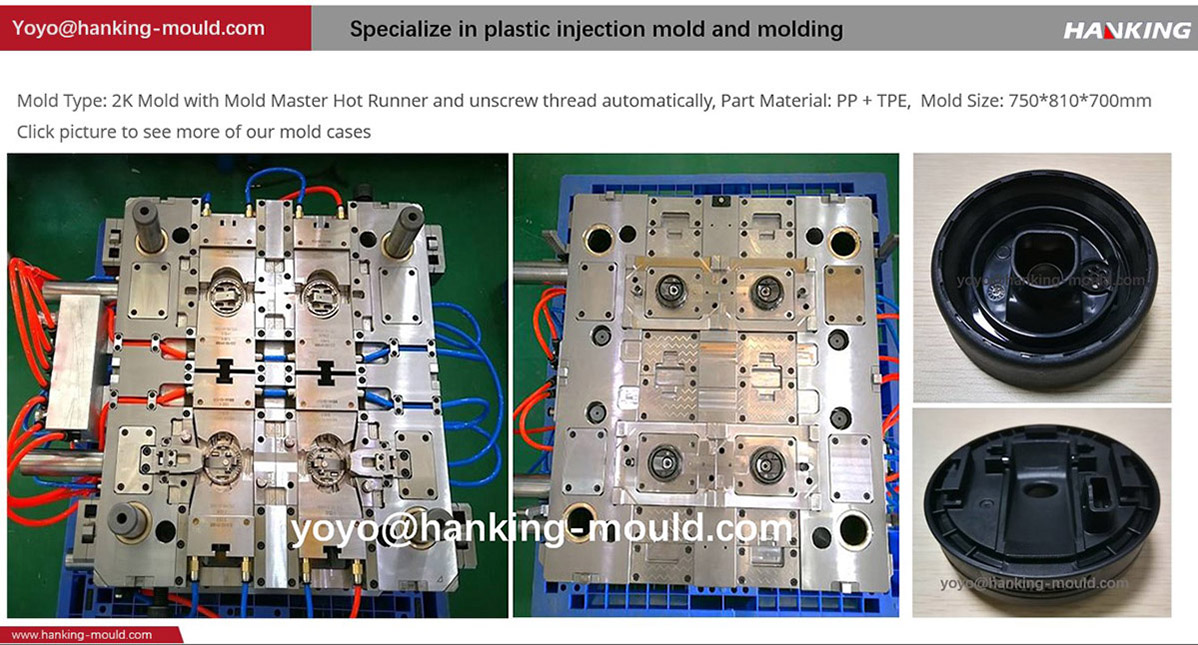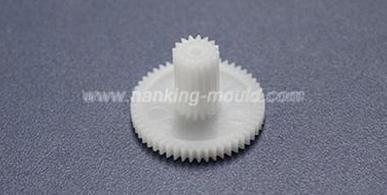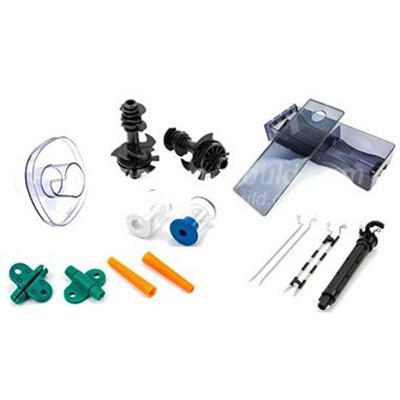

A single-color injection mold, as the name suggests, is an injection mold that can only inject one color at a time; while a two-color injection mold is an injection mold that can inject two colors.
Two-color molds are roughly divided into two types: first, overmolding moulds, and second, two shot molds.
1) The overmolding mould is to mold one product first, and then put the molded product into another set of molds to form another product.
2) Two shot moulds are divided into independent two-color and mixed two-color: independent two-color means making two different colors on the same machine. This is usually done by replacing the cavity (by rotating the mold). A set of two-color molds needs to be made into two sets of molds inserts, two sets of the same core side, and one set of different cavities. The two sets of mold bases need to be interchangeable; when mixing two colors, only one set of molds is needed, and a special plastic machine is required. The principle is two independent nozzles are combined into one, and the color mixing effect is achieved by individually controlling the injection molding parameters of each nozzle.
Understand what a two-color mold is, so what are the characteristics of a two shot mold?
A. Two-color molds require matching two shot injection molding machines.
B. There is an additional rotating mechanism or up and down sliding mechanism.
C. The cavities are different, but the cores are the same. (Different machines will be different)
D. Pay attention to the application of cylinder or other power.
E. High accuracy requirements.

1) It is common for two sets of mold bases to have separate molding structures: the cavity is the same and the core is different (the second mold base is rotated 180 degrees). Note: There are certain techniques for fixing the mold on the injection molding machine; fix one set first and then the other set, mainly adjusting the movable mold part of the other set. High requirements on flange size.
2) The "core side rotation" two-color mold has two cavity and a core composed of two back-to-back molds. This core can be rotated. The two shote injection molding machine equipped with both sides has two barrels, and the second barrel is designed in the vertical direction of the movement direction of the injection molding machine. Two different plastics can be injected at the same time. When the two injected plastics solidify, the injection molding machine opens and automatically ejects the complete product. After taking out the product, the "rotatable core side" rotates 180 degrees. The injection molding machine closes and proceeds to the next cycle.
In the "core side rotation" mode, the first and second barrels are injected simultaneously. Therefore, for the same product, the production efficiency of the "core side rotation" mode is twice that of the "core side translation" mode.
The selection of two shot molding mould materials is the prerequisite for ensuring the quality of mold processing. Therefore, special attention must be paid to the physical and chemical properties of the materials and processing options, so that we can design a reasonable mold.
Combined with traditional mold design, CAE technology and computer-aided engineering have great advantages in improving productivity, ensuring product quality, reducing costs, reducing labor intensity, etc. How are the materials of the two-color mold selected? Dongguan City, Guangdong Xin Plastic Mold Products Co., Ltd. has compiled the following two points for you.
1) Good thermal stability:
The shapes of plastic two-color mold parts are often complex and difficult to process after quenching. Therefore, we should try to choose those with good thermal stability. When the mold is formed and processed after heat treatment, the linear expansion coefficient is small, the heat treatment deformation is small, and the rate of dimensional change caused by temperature differences is small.
2) Sufficient surface hardness and wear resistance:
The hardness of the plastic mold is usually below 50-60HRC. The heat-treated mold should have sufficient surface hardness to ensure that the mold has sufficient stiffness.
During operation, the mold must withstand large compressive stress and friction due to the filling and flow of plastic. The mold is required to maintain the stability of shape accuracy and dimensional accuracy to ensure that the mold has a sufficient service life.






 Call us on:
Call us on:  Email Us:
Email Us:  1st Floor, Block1, No.3 Beiting Road, Houting Community, ShaJing Street, Bao'An District, Shenzhen City, Guangdong Province, China
1st Floor, Block1, No.3 Beiting Road, Houting Community, ShaJing Street, Bao'An District, Shenzhen City, Guangdong Province, China